Zixiang Chen
Global Convergence and Rich Feature Learning in $L$-Layer Infinite-Width Neural Networks under $μ$P Parametrization
Mar 12, 2025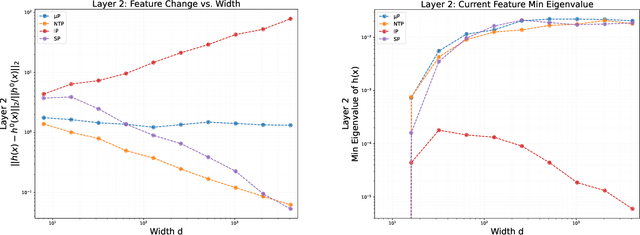


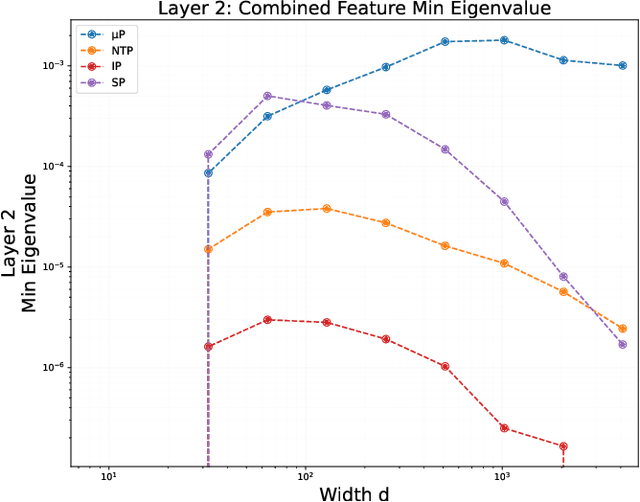
Abstract:Despite deep neural networks' powerful representation learning capabilities, theoretical understanding of how networks can simultaneously achieve meaningful feature learning and global convergence remains elusive. Existing approaches like the neural tangent kernel (NTK) are limited because features stay close to their initialization in this parametrization, leaving open questions about feature properties during substantial evolution. In this paper, we investigate the training dynamics of infinitely wide, $L$-layer neural networks using the tensor program (TP) framework. Specifically, we show that, when trained with stochastic gradient descent (SGD) under the Maximal Update parametrization ($\mu$P) and mild conditions on the activation function, SGD enables these networks to learn linearly independent features that substantially deviate from their initial values. This rich feature space captures relevant data information and ensures that any convergent point of the training process is a global minimum. Our analysis leverages both the interactions among features across layers and the properties of Gaussian random variables, providing new insights into deep representation learning. We further validate our theoretical findings through experiments on real-world datasets.
Convergence of Score-Based Discrete Diffusion Models: A Discrete-Time Analysis
Oct 03, 2024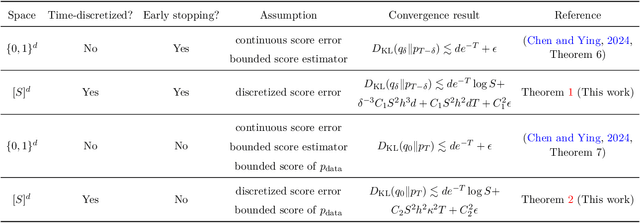

Abstract:Diffusion models have achieved great success in generating high-dimensional samples across various applications. While the theoretical guarantees for continuous-state diffusion models have been extensively studied, the convergence analysis of the discrete-state counterparts remains under-explored. In this paper, we study the theoretical aspects of score-based discrete diffusion models under the Continuous Time Markov Chain (CTMC) framework. We introduce a discrete-time sampling algorithm in the general state space $[S]^d$ that utilizes score estimators at predefined time points. We derive convergence bounds for the Kullback-Leibler (KL) divergence and total variation (TV) distance between the generated sample distribution and the data distribution, considering both scenarios with and without early stopping under specific assumptions. Notably, our KL divergence bounds are nearly linear in dimension $d$, aligning with state-of-the-art results for diffusion models. Our convergence analysis employs a Girsanov-based method and establishes key properties of the discrete score function, which are essential for characterizing the discrete-time sampling process.
Guided Discrete Diffusion for Electronic Health Record Generation
Apr 18, 2024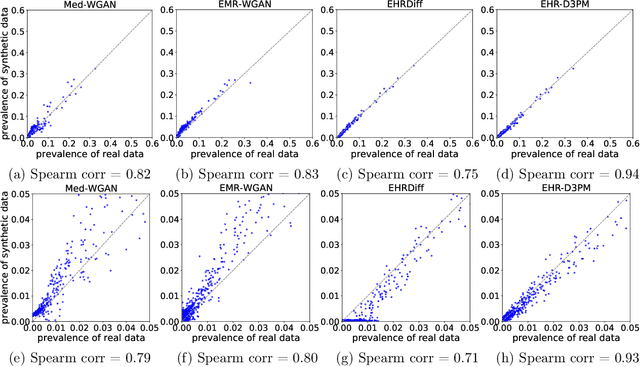



Abstract:Electronic health records (EHRs) are a pivotal data source that enables numerous applications in computational medicine, e.g., disease progression prediction, clinical trial design, and health economics and outcomes research. Despite wide usability, their sensitive nature raises privacy and confidentially concerns, which limit potential use cases. To tackle these challenges, we explore the use of generative models to synthesize artificial, yet realistic EHRs. While diffusion-based methods have recently demonstrated state-of-the-art performance in generating other data modalities and overcome the training instability and mode collapse issues that plague previous GAN-based approaches, their applications in EHR generation remain underexplored. The discrete nature of tabular medical code data in EHRs poses challenges for high-quality data generation, especially for continuous diffusion models. To this end, we introduce a novel tabular EHR generation method, EHR-D3PM, which enables both unconditional and conditional generation using the discrete diffusion model. Our experiments demonstrate that EHR-D3PM significantly outperforms existing generative baselines on comprehensive fidelity and utility metrics while maintaining less membership vulnerability risks. Furthermore, we show EHR-D3PM is effective as a data augmentation method and enhances performance on downstream tasks when combined with real data.
Matching the Statistical Query Lower Bound for k-sparse Parity Problems with Stochastic Gradient Descent
Apr 18, 2024Abstract:The $k$-parity problem is a classical problem in computational complexity and algorithmic theory, serving as a key benchmark for understanding computational classes. In this paper, we solve the $k$-parity problem with stochastic gradient descent (SGD) on two-layer fully-connected neural networks. We demonstrate that SGD can efficiently solve the $k$-sparse parity problem on a $d$-dimensional hypercube ($k\le O(\sqrt{d})$) with a sample complexity of $\tilde{O}(d^{k-1})$ using $2^{\Theta(k)}$ neurons, thus matching the established $\Omega(d^{k})$ lower bounds of Statistical Query (SQ) models. Our theoretical analysis begins by constructing a good neural network capable of correctly solving the $k$-parity problem. We then demonstrate how a trained neural network with SGD can effectively approximate this good network, solving the $k$-parity problem with small statistical errors. Our theoretical results and findings are supported by empirical evidence, showcasing the efficiency and efficacy of our approach.
Self-Play Fine-Tuning of Diffusion Models for Text-to-Image Generation
Feb 15, 2024


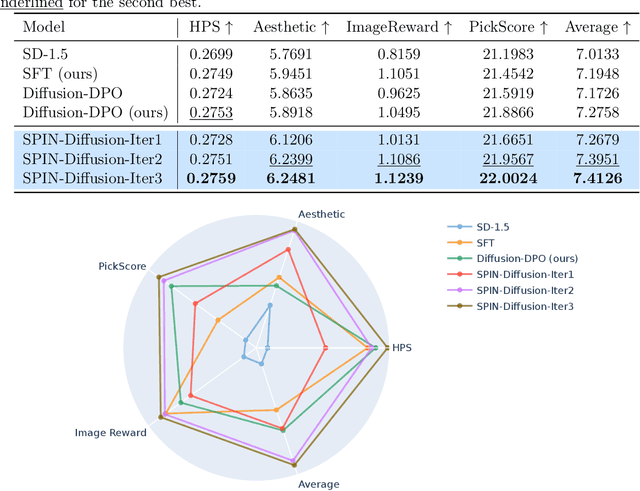
Abstract:Fine-tuning Diffusion Models remains an underexplored frontier in generative artificial intelligence (GenAI), especially when compared with the remarkable progress made in fine-tuning Large Language Models (LLMs). While cutting-edge diffusion models such as Stable Diffusion (SD) and SDXL rely on supervised fine-tuning, their performance inevitably plateaus after seeing a certain volume of data. Recently, reinforcement learning (RL) has been employed to fine-tune diffusion models with human preference data, but it requires at least two images ("winner" and "loser" images) for each text prompt. In this paper, we introduce an innovative technique called self-play fine-tuning for diffusion models (SPIN-Diffusion), where the diffusion model engages in competition with its earlier versions, facilitating an iterative self-improvement process. Our approach offers an alternative to conventional supervised fine-tuning and RL strategies, significantly improving both model performance and alignment. Our experiments on the Pick-a-Pic dataset reveal that SPIN-Diffusion outperforms the existing supervised fine-tuning method in aspects of human preference alignment and visual appeal right from its first iteration. By the second iteration, it exceeds the performance of RLHF-based methods across all metrics, achieving these results with less data.
Self-Play Fine-Tuning Converts Weak Language Models to Strong Language Models
Jan 02, 2024



Abstract:Harnessing the power of human-annotated data through Supervised Fine-Tuning (SFT) is pivotal for advancing Large Language Models (LLMs). In this paper, we delve into the prospect of growing a strong LLM out of a weak one without the need for acquiring additional human-annotated data. We propose a new fine-tuning method called Self-Play fIne-tuNing (SPIN), which starts from a supervised fine-tuned model. At the heart of SPIN lies a self-play mechanism, where the LLM refines its capability by playing against instances of itself. More specifically, the LLM generates its own training data from its previous iterations, refining its policy by discerning these self-generated responses from those obtained from human-annotated data. Our method progressively elevates the LLM from a nascent model to a formidable one, unlocking the full potential of human-annotated demonstration data for SFT. Theoretically, we prove that the global optimum to the training objective function of our method is achieved only when the LLM policy aligns with the target data distribution. Empirically, we evaluate our method on several benchmark datasets including the HuggingFace Open LLM Leaderboard, MT-Bench, and datasets from Big-Bench. Our results show that SPIN can significantly improve the LLM's performance across a variety of benchmarks and even outperform models trained through direct preference optimization (DPO) supplemented with extra GPT-4 preference data. This sheds light on the promise of self-play, enabling the achievement of human-level performance in LLMs without the need for expert opponents.
Fast Sampling via De-randomization for Discrete Diffusion Models
Dec 14, 2023


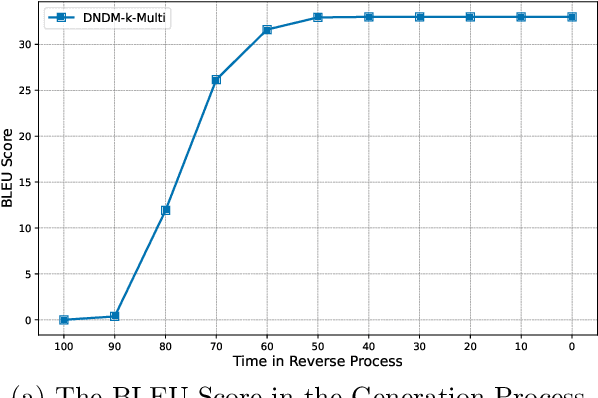
Abstract:Diffusion models have emerged as powerful tools for high-quality data generation, such as image generation. Despite its success in continuous spaces, discrete diffusion models, which apply to domains such as texts and natural languages, remain under-studied and often suffer from slow generation speed. In this paper, we propose a novel de-randomized diffusion process, which leads to an accelerated algorithm for discrete diffusion models. Our technique significantly reduces the number of function evaluations (i.e., calls to the neural network), making the sampling process much faster. Furthermore, we introduce a continuous-time (i.e., infinite-step) sampling algorithm that can provide even better sample qualities than its discrete-time (finite-step) counterpart. Extensive experiments on natural language generation and machine translation tasks demonstrate the superior performance of our method in terms of both generation speed and sample quality over existing methods for discrete diffusion models.
Rephrase and Respond: Let Large Language Models Ask Better Questions for Themselves
Nov 07, 2023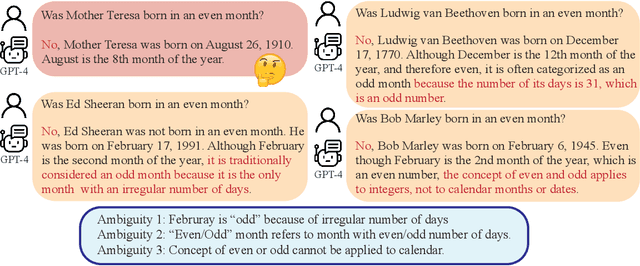
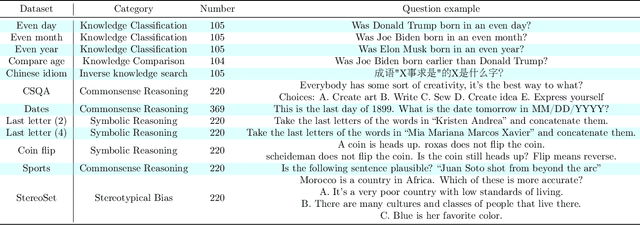


Abstract:Misunderstandings arise not only in interpersonal communication but also between humans and Large Language Models (LLMs). Such discrepancies can make LLMs interpret seemingly unambiguous questions in unexpected ways, yielding incorrect responses. While it is widely acknowledged that the quality of a prompt, such as a question, significantly impacts the quality of the response provided by LLMs, a systematic method for crafting questions that LLMs can better comprehend is still underdeveloped. In this paper, we present a method named `Rephrase and Respond' (RaR), which allows LLMs to rephrase and expand questions posed by humans and provide responses in a single prompt. This approach serves as a simple yet effective prompting method for improving performance. We also introduce a two-step variant of RaR, where a rephrasing LLM first rephrases the question and then passes the original and rephrased questions together to a different responding LLM. This facilitates the effective utilization of rephrased questions generated by one LLM with another. Our experiments demonstrate that our methods significantly improve the performance of different models across a wide range to tasks. We further provide a comprehensive comparison between RaR and the popular Chain-of-Thought (CoT) methods, both theoretically and empirically. We show that RaR is complementary to CoT and can be combined with CoT to achieve even better performance. Our work not only contributes to enhancing LLM performance efficiently and effectively but also sheds light on a fair evaluation of LLM capabilities. Data and codes are available at https://github.com/uclaml/Rephrase-and-Respond.
Implicit Bias of Gradient Descent for Two-layer ReLU and Leaky ReLU Networks on Nearly-orthogonal Data
Oct 29, 2023



Abstract:The implicit bias towards solutions with favorable properties is believed to be a key reason why neural networks trained by gradient-based optimization can generalize well. While the implicit bias of gradient flow has been widely studied for homogeneous neural networks (including ReLU and leaky ReLU networks), the implicit bias of gradient descent is currently only understood for smooth neural networks. Therefore, implicit bias in non-smooth neural networks trained by gradient descent remains an open question. In this paper, we aim to answer this question by studying the implicit bias of gradient descent for training two-layer fully connected (leaky) ReLU neural networks. We showed that when the training data are nearly-orthogonal, for leaky ReLU activation function, gradient descent will find a network with a stable rank that converges to $1$, whereas for ReLU activation function, gradient descent will find a neural network with a stable rank that is upper bounded by a constant. Additionally, we show that gradient descent will find a neural network such that all the training data points have the same normalized margin asymptotically. Experiments on both synthetic and real data backup our theoretical findings.
How Many Pretraining Tasks Are Needed for In-Context Learning of Linear Regression?
Oct 12, 2023Abstract:Transformers pretrained on diverse tasks exhibit remarkable in-context learning (ICL) capabilities, enabling them to solve unseen tasks solely based on input contexts without adjusting model parameters. In this paper, we study ICL in one of its simplest setups: pretraining a linearly parameterized single-layer linear attention model for linear regression with a Gaussian prior. We establish a statistical task complexity bound for the attention model pretraining, showing that effective pretraining only requires a small number of independent tasks. Furthermore, we prove that the pretrained model closely matches the Bayes optimal algorithm, i.e., optimally tuned ridge regression, by achieving nearly Bayes optimal risk on unseen tasks under a fixed context length. These theoretical findings complement prior experimental research and shed light on the statistical foundations of ICL.
 Add to Chrome
Add to Chrome Add to Firefox
Add to Firefox Add to Edge
Add to Edge